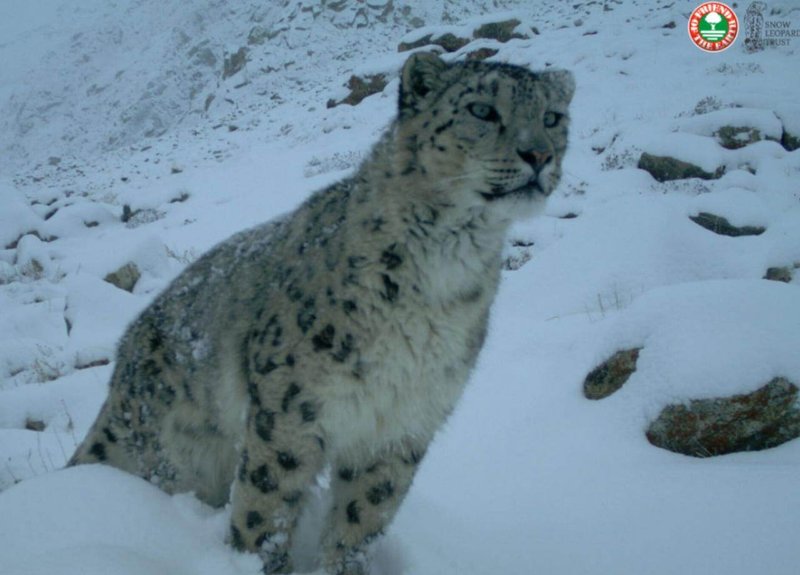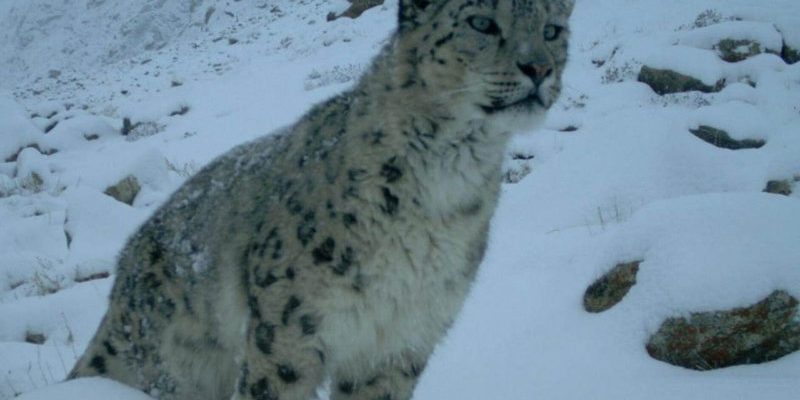
Think about it this way: most wild animals, no matter how beautiful, can potentially pose a threat if they feel threatened themselves. Snow leopards are no different. They’re elusive, solitary creatures, known for their strength and agility. But what does this mean for us humans? In this article, we’ll unravel the truth about snow leopards and if they truly pose any danger to us.
Let’s explore their behavior, any reported incidents, and understand not just their potential threat level but also how to appreciate these fascinating cats from a safe distance.
Understanding Snow Leopard Behavior
Snow leopards are often called the “ghosts of the mountains.” They roam the high mountain ranges, blending perfectly into their surroundings thanks to their beautiful camouflage. But what really drives their behavior?
These big cats are primarily solitary, preferring the company of themselves. They often spend their time hunting prey like ibex and blue sheep. Their hunting style relies heavily on stealth and surprise, allowing them to take down animals much larger than themselves. Honestly, they’re like furry ninjas! You might be wondering how this relates to humans. Well, their solitary and cautious nature means that they typically avoid human encounters.
However, if they feel cornered or threatened, their instincts can kick in. It’s important to understand that they are not inherently aggressive. Instead, they’re equipped with powerful claws and the strength to defend themselves if they need to.
Incidents of Human-Snow Leopard Encounters
You might have heard stories about snow leopards attacking humans. While these instances are rare, they do occur. Most of the time, it’s not about the leopard actively hunting for humans but rather a reaction to feeling threatened.
For example, there have been reports of snow leopards attacking livestock, which can lead to conflicts with local herders. When a snow leopard feels its food source is in danger, it might act defensively. In rare cases, if a human stumbles too close to a snow leopard’s territory or cubs, the leopard might see them as a threat as well.
Let me explain it this way: if you were minding your own business and someone entered your home uninvited, you’d probably react defensively too. That’s similar to what a snow leopard might do when faced with an unexpected human presence.
Snow Leopards and Their Conservation Status
When talking about the snow leopard, it’s crucial to highlight their conservation status. These animals are classified as “vulnerable” due to habitat loss and poaching. Their numbers have been steadily declining, leading to a greater need for conservation efforts.
Honestly, understanding their struggle can help put our fears into perspective. While it’s easy to think they might pose a threat, the real danger lies in their declining population. They are often more scared of us than we are of them. Conservation programs are not just about saving the leopard, but also about fostering harmony between humans and wildlife.
By promoting coexistence, we can support local communities while ensuring that these beautiful creatures continue to roam the mountains. It’s a win-win!
How to Safely Observe Snow Leopards
If you find yourself in an area where snow leopards roam, the best thing you can do is observe these magnificent animals from a distance. Here are some tips on how to enjoy your sighting while ensuring both your safety and the safety of the snow leopard:
- Stay Calm: If you see a snow leopard, remain calm and avoid sudden movements.
- Keep Your Distance: Use binoculars or a camera with a zoom lens to get a good view without getting too close.
- Respect Their Space: If the snow leopard shows signs of discomfort, like moving away or hiding, respect its space and back off.
- Travel in Groups: If you’re hiking in snow leopard territory, travel with others. There’s safety in numbers!
Remember, these cats are incredible creatures worth protecting, and observing them in their natural habitat can be an unforgettable experience.
Common Misconceptions About Snow Leopards
There are a lot of myths surrounding snow leopards. Some people think they’re aggressive man-eaters, while others might believe they’re just cuddly pets. Here’s the thing: neither perspective is accurate.
Snow leopards are not known to attack humans unless provoked. Their diet consists mainly of mountain goats and sheep—much easier prey than a human! In fact, most encounters end with the snow leopard retreating to avoid confrontation.
Additionally, snow leopards are crucial for their ecosystems. By controlling prey populations, they help maintain a balance in their environment. So while they might sound intimidating, their role is vital, and they’re more misunderstood than anything else.
The Importance of Education and Awareness
One of the best ways to ensure that both humans and snow leopards can coexist is through education. Understanding these animals helps demystify them and reduces fear.
Community programs that educate local populations about snow leopards can significantly decrease conflicts. When people know how to safely coexist with these animals, it fosters a peaceful relationship.
For those living near snow leopard habitats, participating in workshops or meeting with conservationists can provide valuable insights into how they can protect both their livelihoods and these magnificent creatures. Education empowers us to act responsibly and compassionately.
Can the snow leopard be dangerous to humans? While they possess the potential to be threatening if provoked, it’s important to remember that their natural behavior is to avoid us. These beautiful animals are more afraid of human contact than we are of them.
As we continue to learn more about snow leopards, we can appreciate their role in our ecosystems and foster a respectful coexistence. By protecting their habitats and understanding their behaviors, we can ensure that future generations will have the chance to glimpse these enchanting creatures in the wild. So, let’s cherish them from a safe distance and promote a world where both humans and snow leopards thrive.

